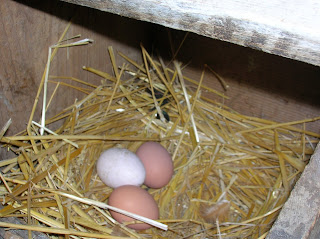A beautiful bowl of red Borscht - image from
http://simplyrecipes.com/recipes/borscht/.
Last time I shared three lessons Chris and I have learned from our year of intentionally including locally grown foods in our home. Here's a few more lessons - hopefully they'll help or encourage you in your local foods pilgrimage.
4. Lesson learned: When butchering a chicken, dip fast. To remove feathers from a chicken after butchering, they are dipped in very hot water. Thus, when Chris butchered our last chicken, he had a pot of hot water ready. After dipping and defeathering the bird, he found he had not only made it easier to remove the feathers, but cooked the bird in the process. "You need to dip fast," my Mom told him. Lesson learned - maybe he'll get another chance to try next year (but I hope not)!
5. Lesson learned: Beets don't always taste like dirt. To me, beets have always tasted like dirt. If I was a pregnant woman with pica, I would enjoy beets, however, I am not. Therefore, I avoid beets. Chris made Borscht tonight, and I discovered I like beets. Amazing...fresh local food is often like this. When it is straight from the land, the flavor is amazing. My cousin didn't like apricots, until she had them fresh from my aunt's tree. Chris's coworker didn't like pears, until he had a juicy one from my parent's farm. The stories are endless....fresh local food has amazing taste!
6. Lesson learned: Eating locally creates connections among passionate people. In the past year, we attended and hosted more than one meal where each dish on the table had a story, and its history was shared with excitement by the person that brought it to the table. Over local produce, meats and breads many gardening secrets have been shared, along with excitement about the current harvest or dreams of future harvests. These are meals and experiences with people who love the land, and as that credit card commercial says, they are priceless.





.JPG)


.JPG)




.jpg)



.JPG)






.JPG)
.JPG)
.JPG)












